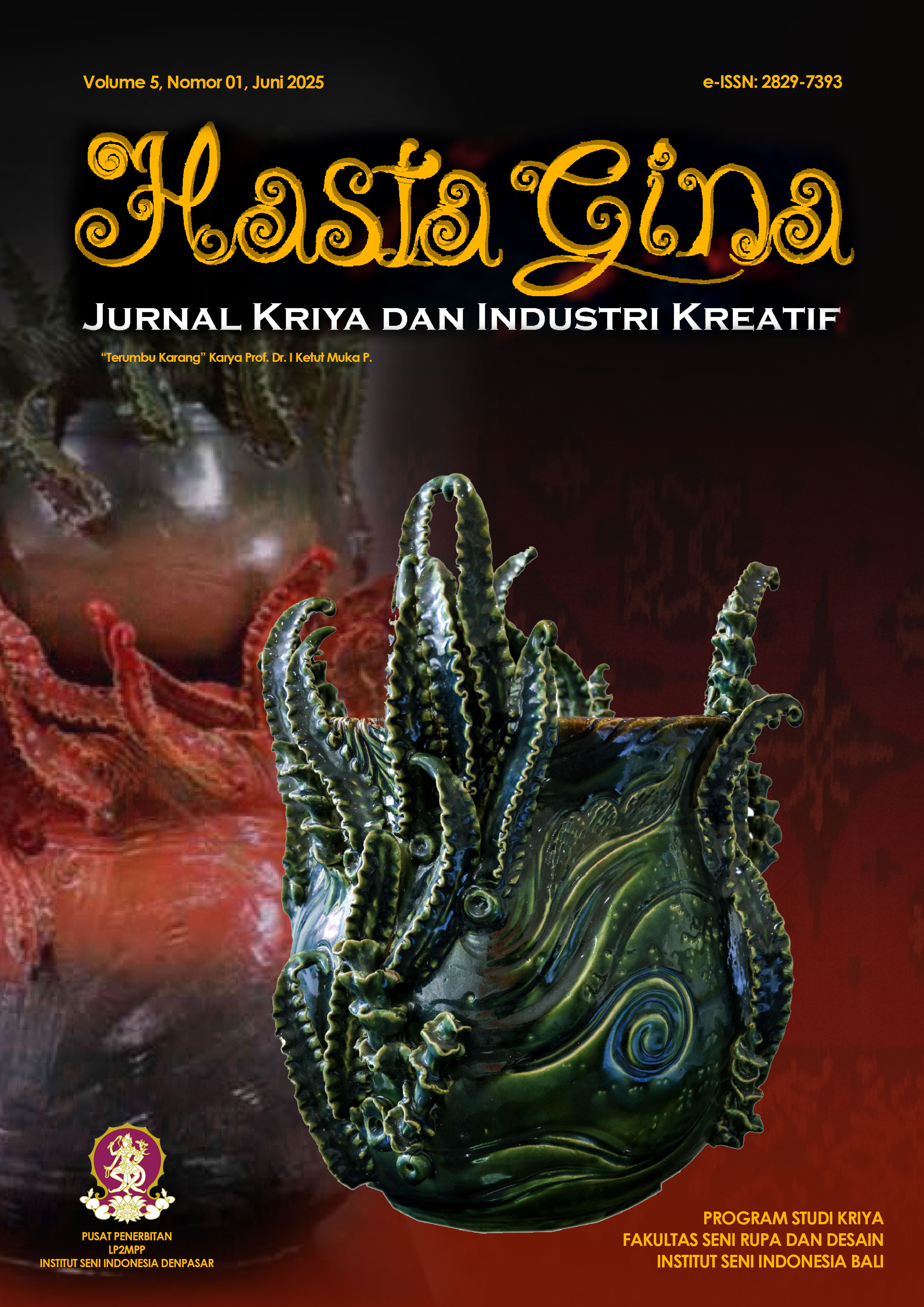The Creation of Ceramic Works Using Electric Wheel Technique at UD. Tri Surya
DOI:
https://doi.org/10.59997/hastagina.v5i01.4306Keywords:
Ceramics, Electric Wheel TechniqueAbstract
This study aims to create ceramic works using the Electric Wheel technique at UD. Tri Surya, a ceramic company focused on producing high-quality ceramics. This research is driven by the importance of innovation in the ceramic world, particularly in the manufacturing techniques that can produce more complex ceramic forms while being more efficient. The Electric Wheel technique is one method of ceramic production that uses an electrically powered spinning wheel, providing stable speed and ease in shaping clay. The research methodology employed is an experimental approach, where the author creates ceramic works through several stages: preparation of raw clay materials, mixing, shaping with the Electric Wheel, drying, firing, and glazing. This technique is applied to create various forms, ranging from utilitarian ceramics to ceramic art pieces. This study also explores the creative process faced by artisans in using the Electric Wheel and its impact on the quality and aesthetics of the resulting ceramic products. The results of this research show that the Electric Wheel technique offers many advantages, such as precision in shaping and time efficiency. The ceramic works produced are more structured and symmetrical compared to those made with manual pottery wheels. However, the study also identifies several challenges encountered in using this technique, such as speed control and adjustment to specific types of clay. Overall, this study provides a significant contribution to the development of ceramic manufacturing techniques in the industry, particularly in terms of technological innovation and creativity. The application of the Electric Wheel technique at UD. Tri Surya has opened opportunities for improved production quality and product competitiveness, as well as enhancing artisans' understanding of technology use in ceramic art.


